What Is Experiential Marketing?
Experiential marketing invites consumers to interact directly with a brand to encourage brand awareness, action, and loyalty.
Experiential marketing can include live events, conferences, pop-up stores, trade shows, etc.
Or, online marketing tactics such as webinars and augmented reality (AR) campaigns.
Experiential marketing is also referred to as engagement marketing, XM marketing, or participation marketing.
How Experiential Marketing Strengthens Your Brand
Experiential marketing works because it’s an immersive experience. In other words, you’re not talking at the customer—you’re involving them.
Why is this important?
Because experiences have a lasting impact.
According to a study by The Wharton School, experiences provide more satisfaction and happiness than material goods. They also form a bigger part of a person’s identity:
Experiential purchases might also create greater feelings of social connection because consumers are more likely to talk to others about their experiences than their possessions.
…telling stories about experiences is likely to feel more substantial and meaningful to both the speaker and listener, thereby fostering more of a bond between them.
Simply put—you’re more likely to remember how a brand made you feel (your experience with them) over what you bought from them.
Further reading: How to Do Brand Positioning: A Value-Based Approach
Want to enjoy these benefits for your business?
Here are 10 creative examples of experiential marketing to inspire your own marketing efforts.
1. Spotify Everywhere
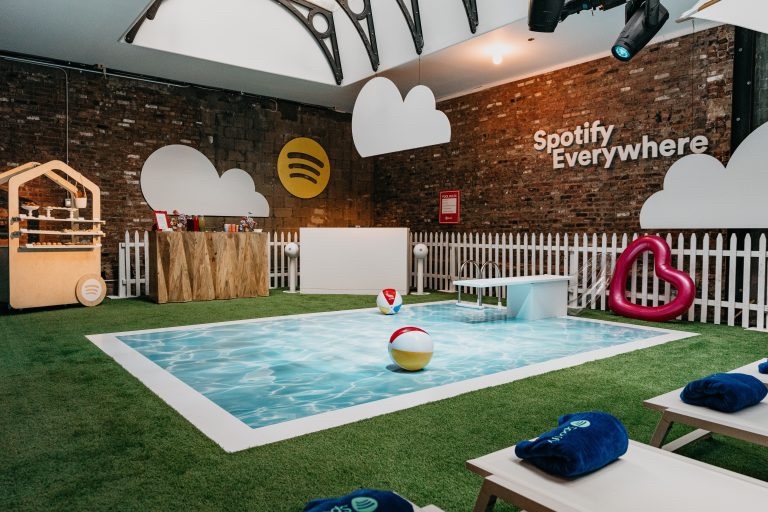
Image source: Spotify—For The Record
To educate users on its app features and brand partnerships, music streaming service Spotify created an in-person experience that engaged all five senses.
Its Spotify Everywhere brand activation invited users to an “immersive house of audio where music and podcasts are everywhere you turn.”
Every room in the New York City venue featured a product or tool by a Spotify partner that you could use to listen to audio.
The house also included a kitchen with food from local bakeries and a fridge filled with Easter eggs. Within each egg was a scannable code to a Spotify playlist.
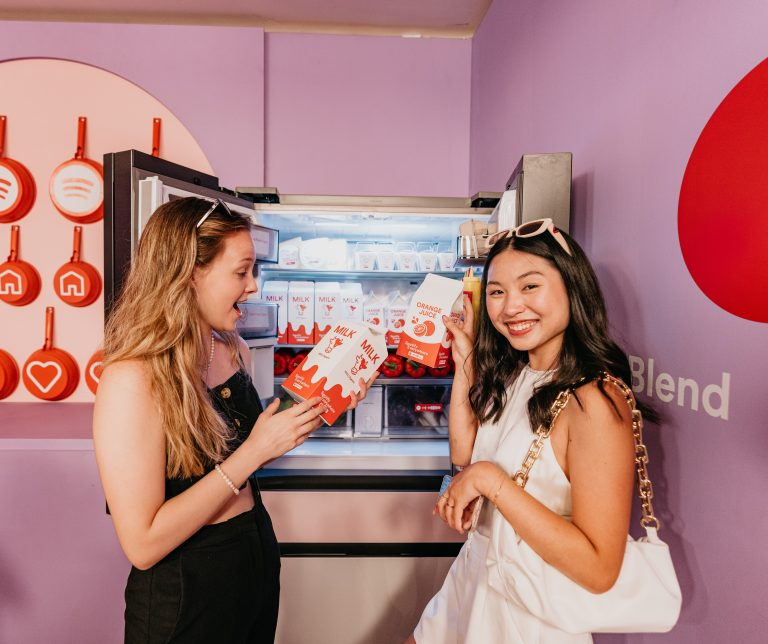
Image source: Spotify—For The Record
This appealed to the brand’s Gen Z audience, who Spotify says **** discovering hidden Easter eggs and new music.
Of course, all this is great for those in attendance. But what about those who couldn’t get to Manhattan?
Spotify extended the experience to its online audience with a live virtual tour hosted on the brand’s Instagram account.
It also decorated the venue in an Instagram-friendly palette. This inspired social mediainfluencers to share selfies with their followers. And increased the reach of the campaign.
Spotify said the event was a success, resulting in buzz and shares across its social media channels.
What You Can Learn
To show the full value of your product, think about how to bring it to life. Host events where people can come and try it out for themselves.
Spotify Everywhere is a great example of how immersive marketing can educate customers in new ways.
The company added sight, touch, taste, and smell to its listening experience. Customers saw how app features and partner products could enhance their experience by getting hands on.
But your events don’t have to be as elaborate.
For instance, you could hold live demonstrations in your retail location or at community events. When people can see and touch your products, they get first-hand experience with its benefits.
And this can be a big selling point. Because understanding all the ways a product benefits you creates the perception of getting more for your money.
2. IKEA Place App
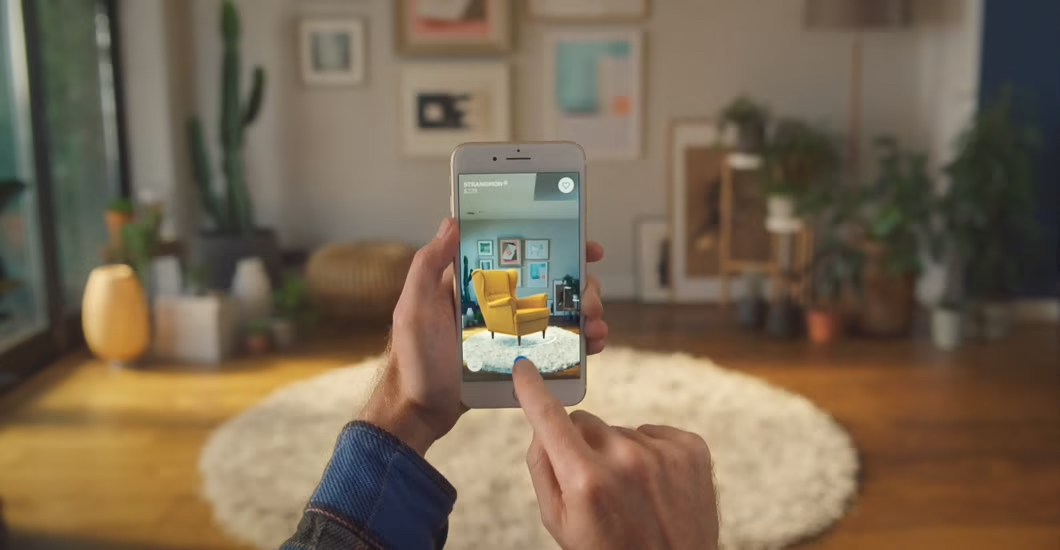
Image source: IKEA Global
IKEA Place is an augmented reality (AR) app that lets customers test how products fit into their homes.
Click on a product (sofa, lamp, rug, table, etc.), and the app uses your phone’s camera to “place” it in your space. All products are 3D and true to scale, so you can make sure they’re right for your room before buying.
IKEA Place recreates the in-store customer experience for online shoppers. It makes IKEA products accessible to more people. And helps customers make informed decisions, reducing the number of returns.
IKEA has traditionally relied on its print catalog to drive in-store sales. But interest in the brochure declined.
At the same time, online sales were increasing. So, the company put more emphasis on ecommerce. And on using AR in their marketing.
And they’re not alone. The AR Advertising market has been steadily growing in recent years. And projected to be worth $4.30 billion in 2023, and up to $6.72 billion in 2027.
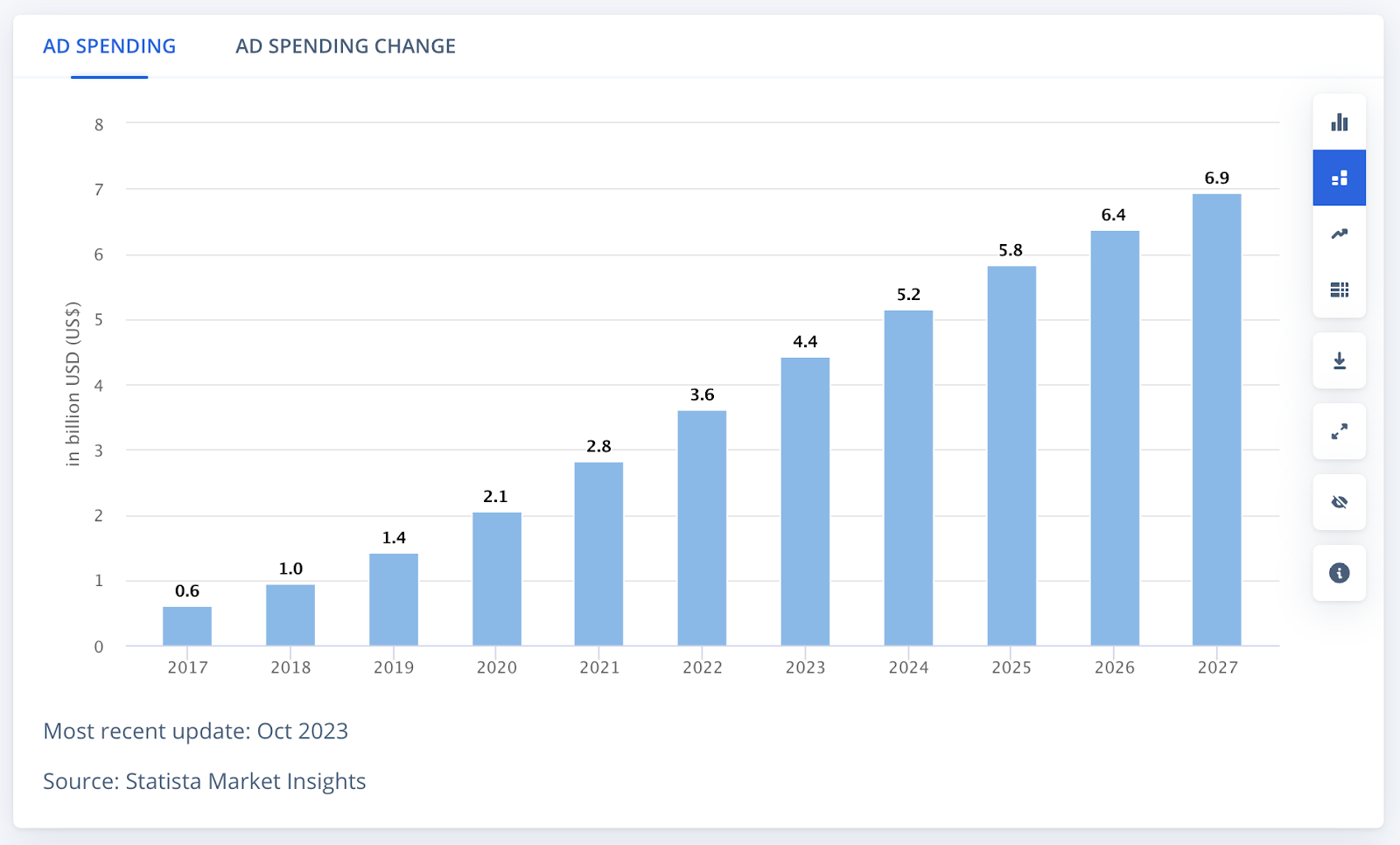
IKEA Place is the result of evolving to meet customer needs. It bridges the gap between catalog, store, and online shopping. And introduces the brand to more people.
What You Can Learn
Listen to your target audience. Perform market research to find out what makes them more likely to buy your product. Survey current customers to learn how to make their experience better.
Use their feedback to shape your experiential marketing strategy.
Further reading: Market Research: What It Is & How to Do It
3. Herr’s Flavor Votes
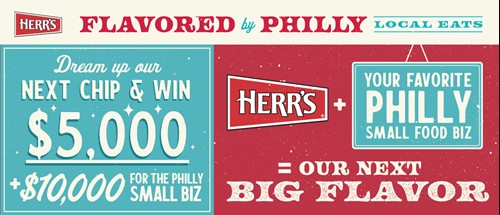
Herr’s, a Pennsylvania-based snack producer, understands the value of building relationships in their community.
So, it involves customers in developing new products.
The brand runs the “Herr’s Flavored by Philly” competition (now in its second year). They first invite local community members to nominate new flavor suggestions. The company then narrows down the list and produces the top three results.
They invite the community to try them out and pick their favorite.
The winner gets a cash prize. And Herr’s gets to build a strong sense of community among its fans.
In 2023, Herr’s made the competition even more community-centered by focusing on local small businesses.
The flavor nominees all had to be Philadelphia-based eating establishments.
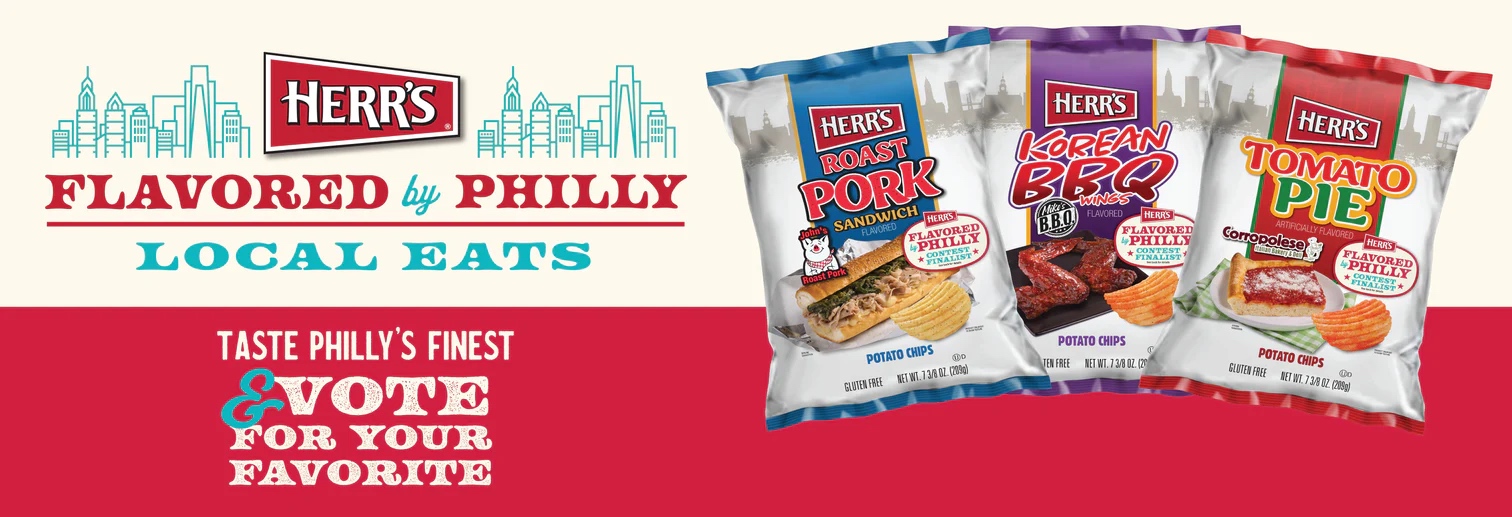
The prize money was divided between the individual who nominated the flavor and the small business.
The contest made the product intriguing. And the small small business support joined people together in a cause.
What You Can Learn
Use experiential marketing to involve customers in product development. Getting feedback from customers shows you’re listening. And friendly competition boosts interest.
Herr’s experiential marketing also works because there’s a payoff. So, incentivize participation.
There are different ways to do this:
- Prizes
- Exclusive discounts
- Rewards points
- Free swag
The right option depends on your product or services and what most benefits your customers. Just make sure the reward justifies the effort.
4. Apple’s #ShotOniPhone Challenge

Image source: Apple—Newsroom
To build excitement for its advanced camera functionality, Apple first launched its #ShotOniPhone challenge in 2015. It encouraged users around the world to submit their best photos on social media using the hashtag.
Apple has continued the campaign, updating it for new products. For instance, to highlight the advanced macro feature in its iPhone 13 Pro lineup, it challenged users to share photos using the feature.
Users shared their favorite iPhone 13 Pro macro photos. The company then selected the top 10 entries, which were featured on the site and used in campaigns.
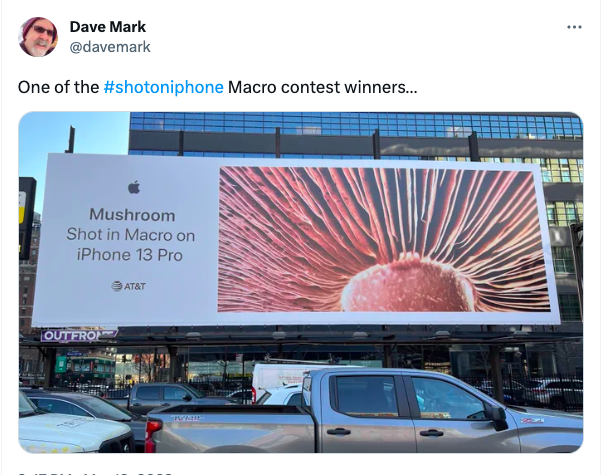
By encouraging users to get involved and show off their skills, the campaign achieves several things:
- It builds trust in the product by showcasing what it can do
- It encourages user-generated content (UGC) and widespread sharing
- It builds a sense of community among iPhone users using the hashtag
These are key ingredients in any viral campaign as they make it easy to drive word-of-mouth marketing.
Apple’s efforts were no exception. Currently, the #ShotOniPhone hashtag has almost 29 million posts on Instagram.
What You Can Learn
Make it easy for customers to participate in your experiential marketing campaigns. The simpler something is, the more likely people are to give it a go.
And make marketing experiences tap into people’s interests.
The hashtag and challenge are geared toward users interested in producing top-quality images. Getting to do so and potentially having their work seen on a global scale generates participation among those users.
These elements combined increase participation. So, you get to enjoy the benefits of UGC to:
- Create hype
- Promote brand trust
- Drive leads and sales
Further reading: 15 Effective Lead Generation Strategies (+ Best Practices)
5. Lean Cuisine’s #WeighThis Installation
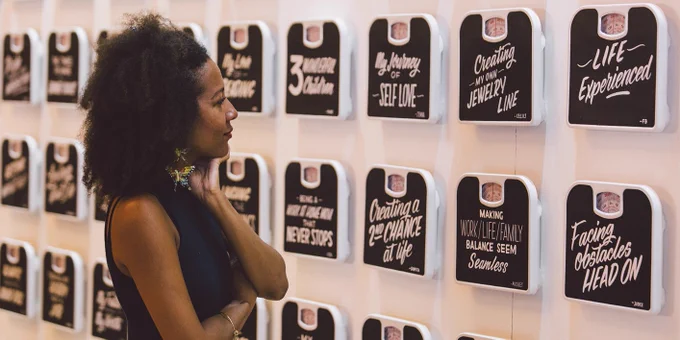
Image source: Lean Cuisine on X
Lean Cuisine took a stand for a cause with its follower-inspired #weighthis art installation at Grand Central Station in New York City.
The frozen food brand wanted to move its image away from sometimes harmful “diet” culture and refocus on health instead. It did this by encouraging women to share the things they really want to be recognized for with the hashtag #weighthis.
They then commissioned an installation of individual scales printed with the inspiring responses.
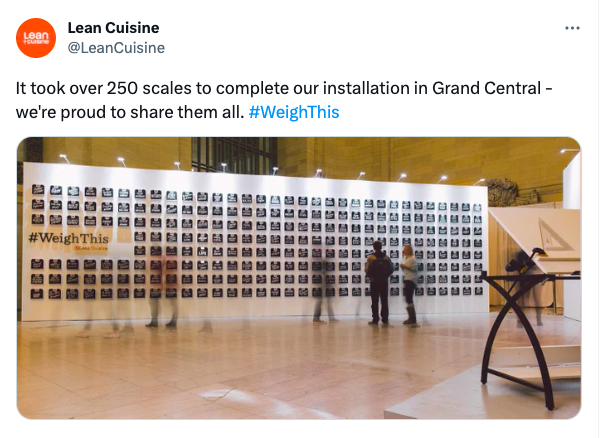
Data from Edelman shows that 63% of consumers buy or advocate for brands that align with their beliefs and values.
So, it’s important to be clear on your purpose.
By showing its support for a healthier approach to self-image, Lean Cuisine strengthens brand perception and brand loyalty with customers who share its values.
What You Can Learn
Align experiences with your brand values.
A key to brand longevity is contributing something that goes beyond selling your product. Experiential marketing can be a way to raise awareness of different aspects of your purpose and mission.
6. Semrush Training Sessions
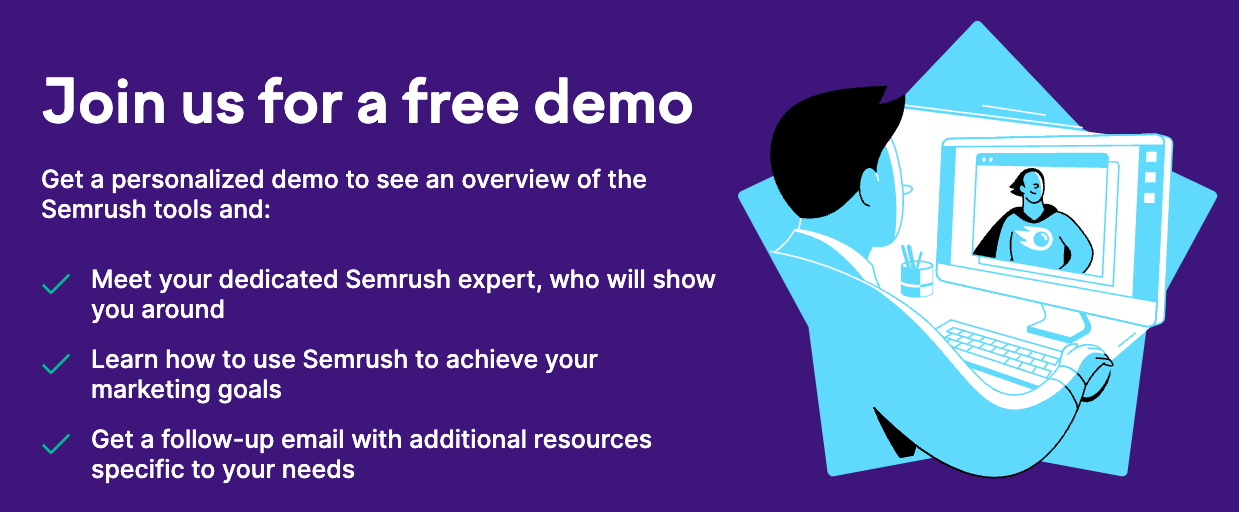
At Semrush, we use free trial demos to help customers make the most of their Semrush account.
Each demo is a one-on-one training session that includes:
- An overview of Semrush tools and features
- How to use Semrush to achieve your marketing goals
- A follow-up email with additional resources specific to your needs
After the demo, we assign each customer a dedicated point of contact to answer all Semrush-related questions.
It’s another example of building relationships. Each training session ensures customers are getting maximum value from the product. And it makes a real difference to their business.
What You Can Learn
If you have a complex product, use interactive experiences to teach people how to use it.
When buying a product, people want solutions, trust, and relationships.
Demos deliver all three.
Use them to educate and engage your audience. And boost the appeal of your product.
7. Gatorade Combine
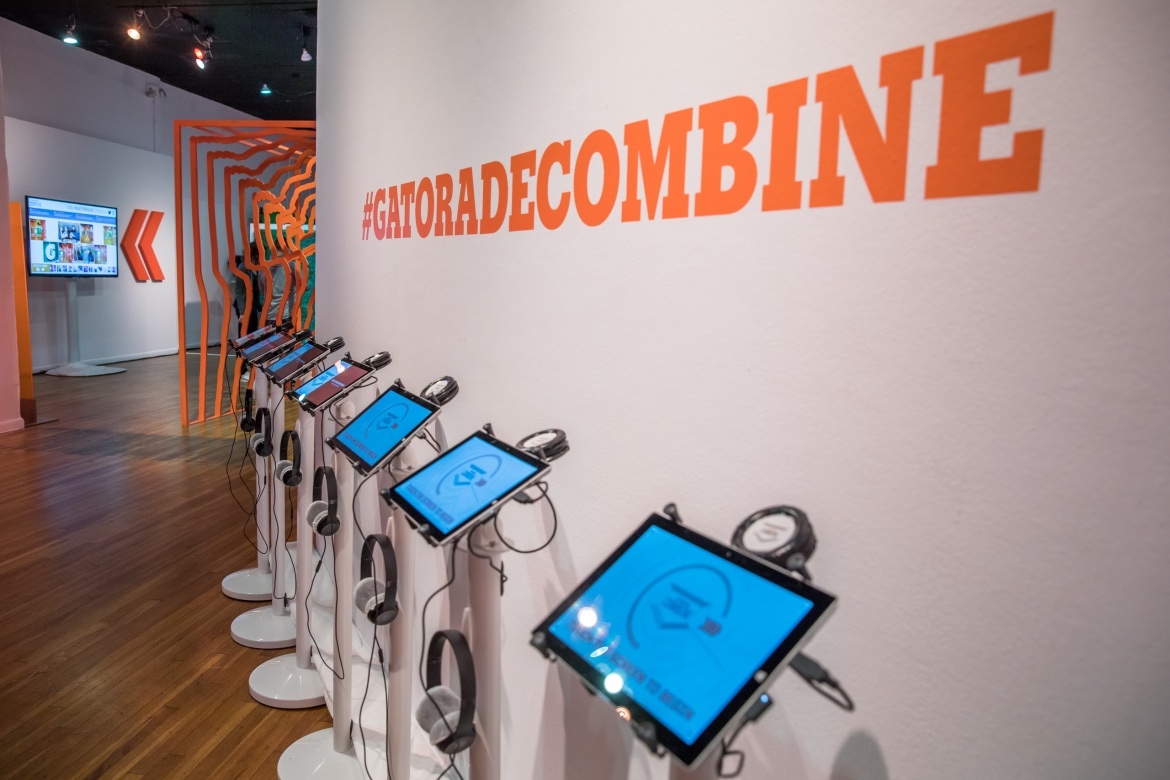
Sports drink brand Gatorade created an opportunity for sports fans to experience a combine—a test professional sports organizations (notably the NFL) use to identify top athletes.
Interactive events are an effective way to raise brand awareness and engage with your target community. In this instance, Gatorade gave its audience of sports enthusiasts a chance to test out their own athletic prowess—just like the pros.
The event took place at the SXSW conference. Fans had a chance to try out typical conditioning drills that tested speed, strength, and skill level. But with a tech twist.
The brand partnered with tech companies like Sparta Science and Xbox Kinect to offer virtual flexibility, speed, and jump stations.
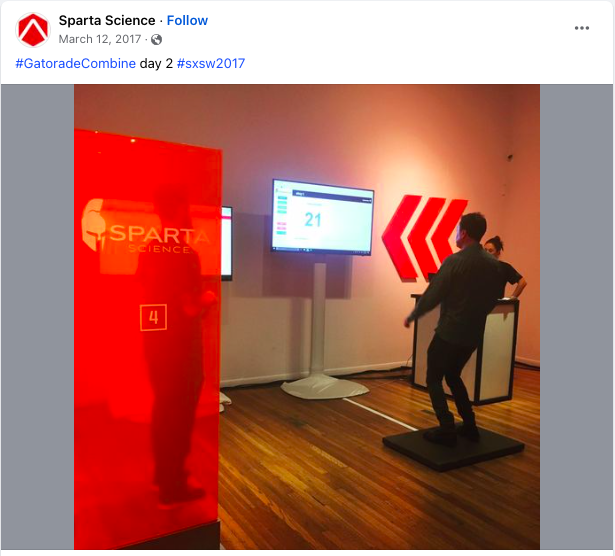
The tech recorded test results and sent them to participants after the event.
This kept the connection going even after the conference to use as a baseline for their own fitness goals.
Moves like these help Gatorade create a positive brand perception with customers and non-customers.
What You Can Learn
Identify your target audience’s interests and appeal to them.
Create an experience that plays on those interests. And one that will have meaning for the participants beyond your event.
Further reading: The Complete Guide to (Effective) Customer Analysis
8. Solve Pop-Up Office
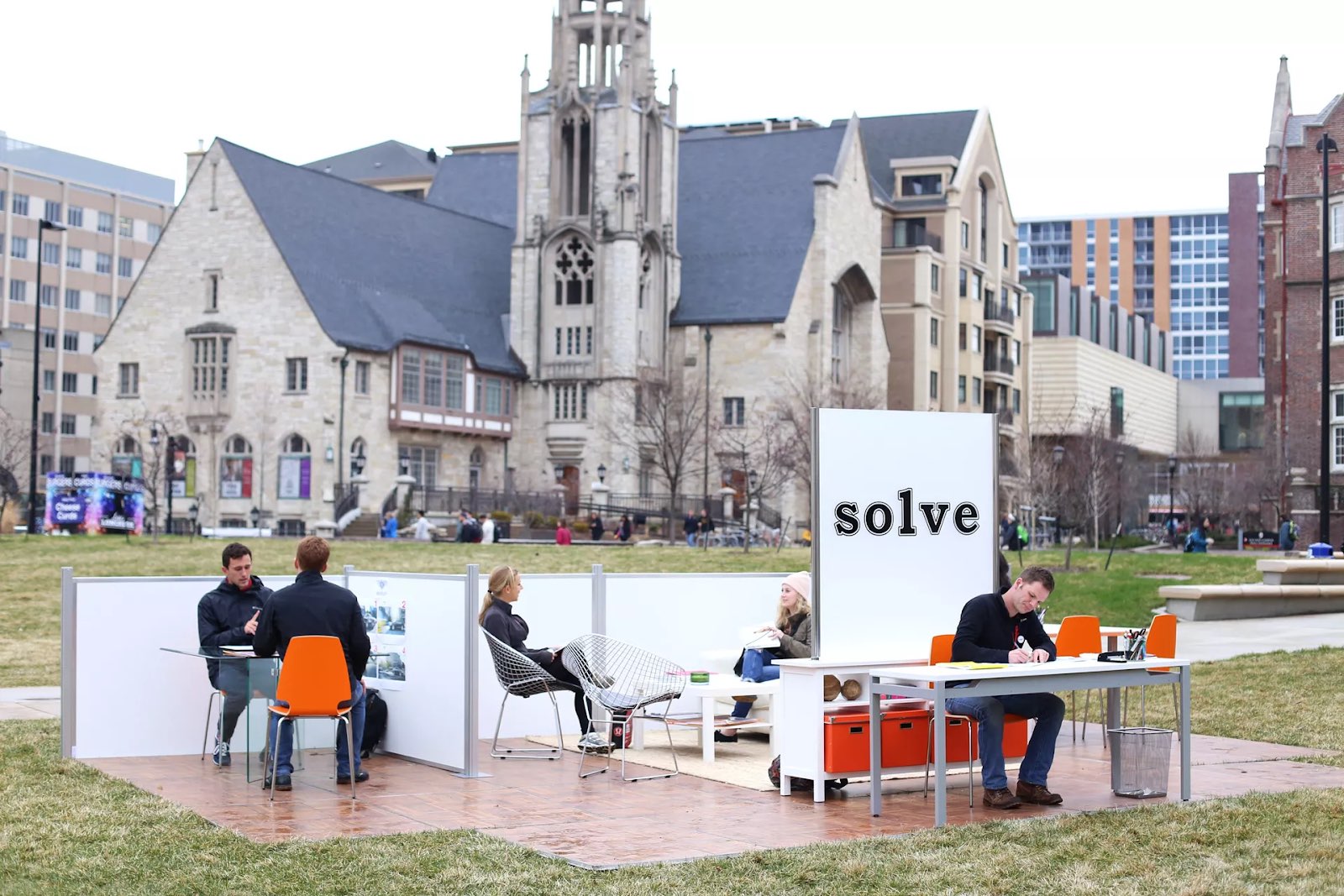
Solve, an ad agency in Minneapolis, took their search for a new intern to new heights with an interactive pop-up.
They took a portable version of their office to local college campuses. Students were invited to do a five-minute job assignment. The top performers got an interview right then.
Instead of the standard recruiting booth with flyers, Solve offered potential candidates real-world job experience. They got to experience an authentic work environment and get a taste of the internship.
What You Can Learn
To stand out from the competition, let your audience experience your brand.
Solve took their office on the road so students could see what it was like to work with them. The unique approach also gave candidates a sense of the agency’s culture and creativity.
Turning the search for an intern into an interactive experience created connections with students. And it helped generate interest by presenting a challenge with a real-world prize.
9. YoastCon

YoastCon is a one-day interactive SEO and marketing conference hosted by SEO software provider Yoast.
Attendees enjoy talks and workshops by industry experts. They also get tips and insights from the Yoast team on how to use the product.
It’s a place to learn how to grow your business online and network with other industry professionals. All under the Yoast banner.
For Yoast customers, YoastCon strengthens their affinity with the brand.
For potential customers, the experience positions Yoast as the go-to choice for an SEO plugin.
Why?
Because YoastCon proves Yoast invests in helping its audience improve.
If you’re choosing between two brands, you’re more likely to pick the one that helped you solve a problem or make a new connection.
What You Can Learn
A conference is a great way to share expertise and educate your audience. It helps build authority, credibility, and trust. And create personal connections.
Don’t have the resources to launch your own conference?
Host a talk, workshop, or exhibit at an event in your niche.
For instance, if you provide SEO and editing services, pitch a breakout session at a local content marketing expo.
10. Mailchimp Online Events
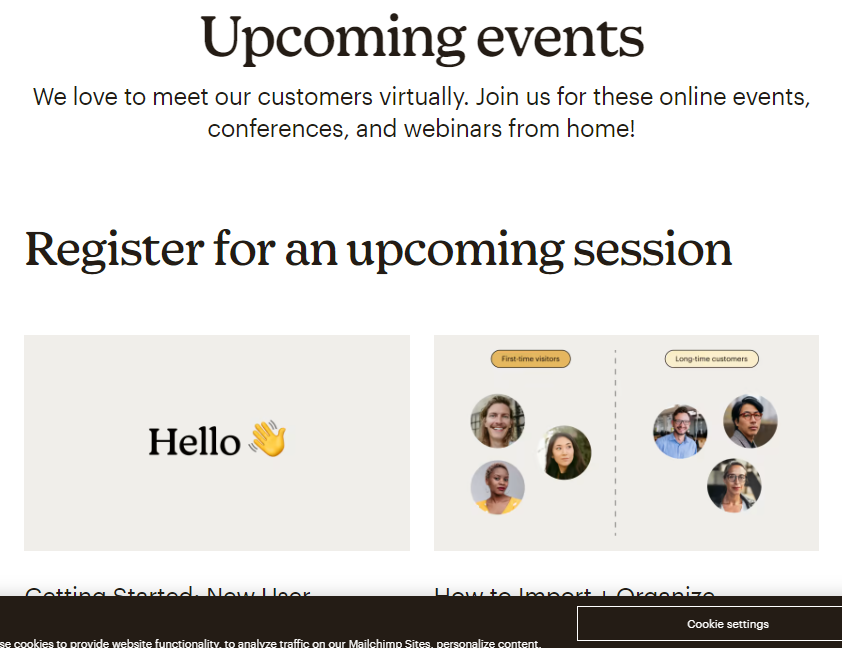
Marketing platform Mailchimp uses live events to meet and teach customers.
Online events are a great alternative to face-to-face workshops. They are:
- Cost-effective
- Convenient to attend
- Accessible to a wider audience
And people are comfortable with them. Post-pandemic audiences are used to interacting with brands virtually.
Online events such as webinars or livestreams offer a safe way to attend events and enjoy the same benefits an in-person audience does.
An expert hosts each Mailchimp event and shows attendees how to complete tasks on the platform (e.g., send an email campaign, import contacts, etc.).
By explaining key features and detailing steps, Mailchimp gets to show off the value of its platform. Hosts also encourage customers to follow along and ask questions, enhancing interactivity.
The company targets most events at new customers. This is a smart move.
Why?
Because Mailchimp is free to use.
This means less risk for customers signing up. But it also makes it easier for those customers to walk away before they have enough experience to understand the tool.
By using experiential marketing to show new users how to make the most of the platform, Mailchimp fosters trust and loyalty. And increases customer lifetime value (CLV).
What You Can Learn
Use online events to reach a large audience and learn more about your customers.
To drive participation, align events with your product or service. And ensure there’s a clear benefit. Customers should leave more knowledgeable than they came.
For example, Mailchimp runs a webinar to show users how to send an email campaign. The description lets attendees know exactly what they’ll learn:
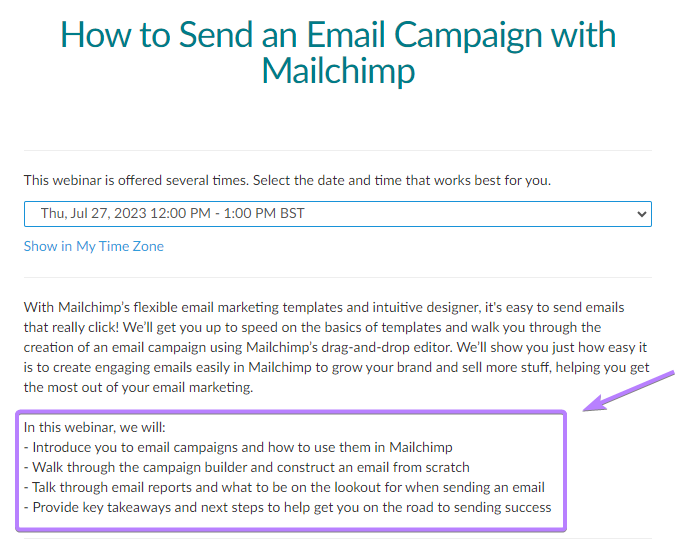
Encourage interactivity by allowing attendees to ask questions and interact with the speaker in real time. This enhances the experience for users.
It also lets you understand the problems users are facing. So, you can address them in product updates and content marketing.
Finally, set up a registration page. It’s important for two reasons:
1. It lets you gauge interest in your event
2. It gives you customer data for personalized email marketing
Here are some more tips on how to create a successful marketing webinar:
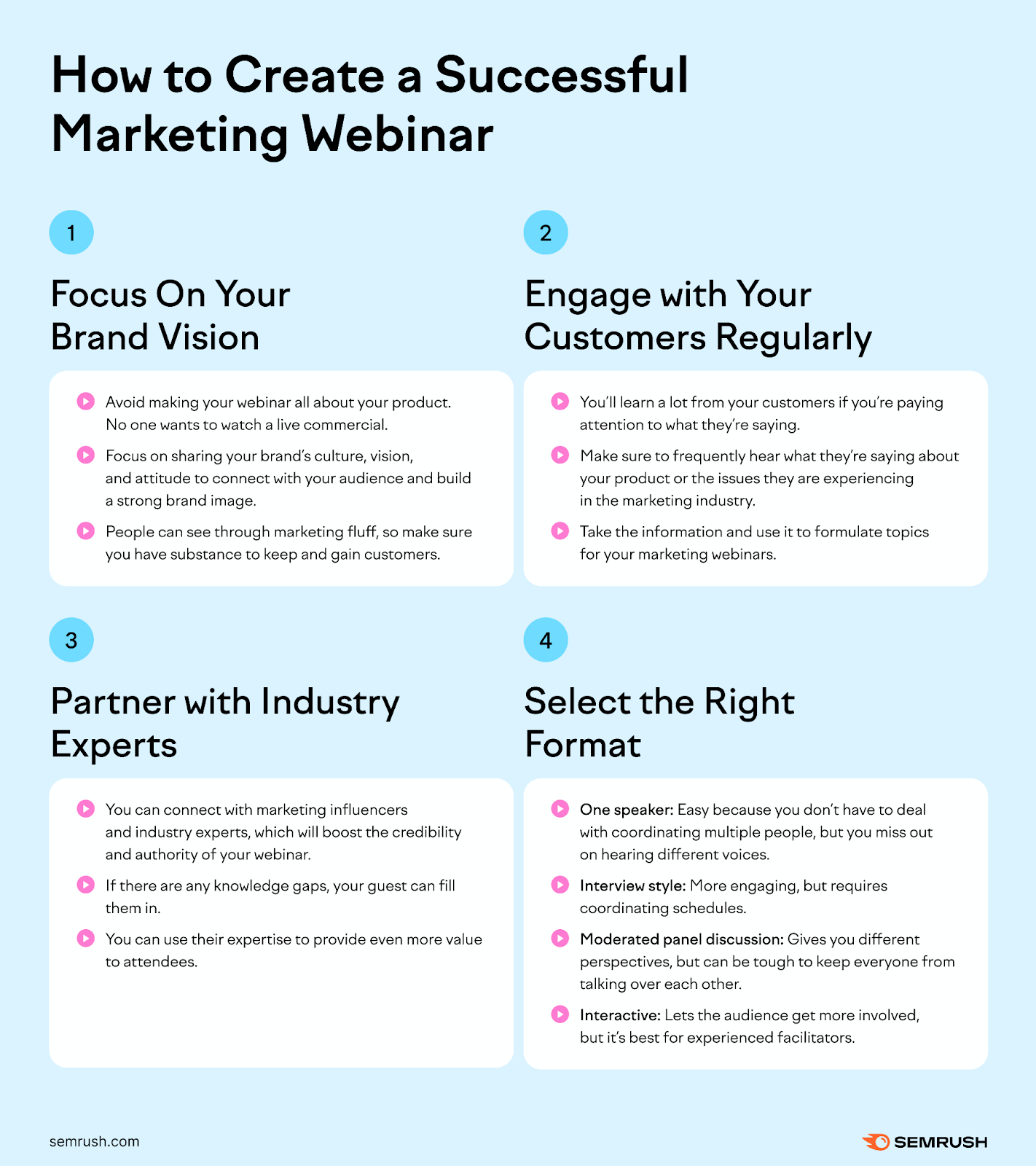
Create Memorable Experiences
Experiential marketing lets you engage customers beyond digital marketing campaigns. But its success is rooted in the same fundamentals that drive your content and ads.
To get people talking and acting, listen to your audience. And build memorable experiences around their needs.
To analyze your market and build a winning strategy, enroll in the Semrush Academy course Marketing Analysis—Where Theory Meets Practice.
Or jump right into research with the help of Semrush Trends.
Source link : Semrush.com
